What’s in the dance with horses?
The dance with a horse is one of the most exhilarating experiences you can have.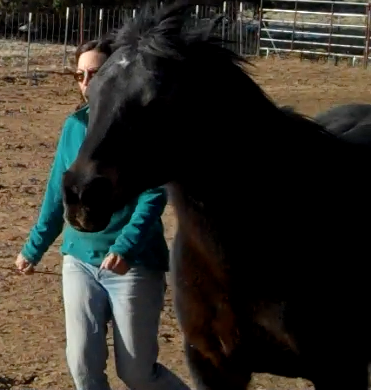
However, before you can safely dance with your horse or with another, several safety factors have to be in place, both physically and energetically.
- Horses must feel very safe and have clear boundaries in place before it is safe to do this.
- Some horses feel you might be teasing them by leaping with them, so it’s important to establish intent and joy before entering into the dance.
- I want the right energetic connection so the horse doesn’t get overly excited and lose connection in the fun of it.
- I want long periods of connection possible before entering the dance.
- Respectful distance between you and the horse must be established. Horses often don’t have good spatial sense, so we must maintain the dance at a safe distance and develop a feel for what that distance is with each horse. Dance clear of flying hooves!
The dance is an extra, borne out of the work with sitting, walking, trotting together, and go and come to me. It can flow so naturally from those activities that often it comes as a surprise.
Often you’ll see a person leaping with a horse but too close so the horse could kick out and nail her, or rear in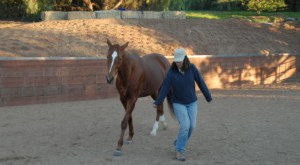 front of her. Some horses have a natural sense of the right amount of space between themselves and a person, but others have no clue. It is through working together that you learn this and start building the distance you want.
front of her. Some horses have a natural sense of the right amount of space between themselves and a person, but others have no clue. It is through working together that you learn this and start building the distance you want.
I also don’t want to start something like rearing, that I don’t want under saddle. This is a personal preference but one that comes from safety. Unless the horse is doing some kind of spectacular event, I don’t see what’s the point of all that drama. If there is a goal toward dressage movements likepiaffe, then the work makes some sense in gymnasticizing the horse and bringing joy at the same time. But those movements are very tightly controlled and don’t involve flying limbs, they are soft and contained.
The dance with big movements can elevate the back and make the horse very light. The horse can find the levade in himself sometimes, the one he shows you while in the pasture. When he feels this buoyancy in his body, he may want to leap for joy. It is that joy that I want him to feel with me – either next to me or under saddle, as though we were both light as feathers.
It is that joy that I want him to feel with me – either next to me or under saddle, as though we were both light as feathers.
I moved away from teaching the dance because of the possibility of injury if not learned correctly and carefully. And because a student must be devoted for a period of time to achieve it. A student must have good mastery of body language and body awareness, as well as rhythm and timing. Some stop short of that point because they have what they want: the relationship, and the dance doesn’t matter to them.
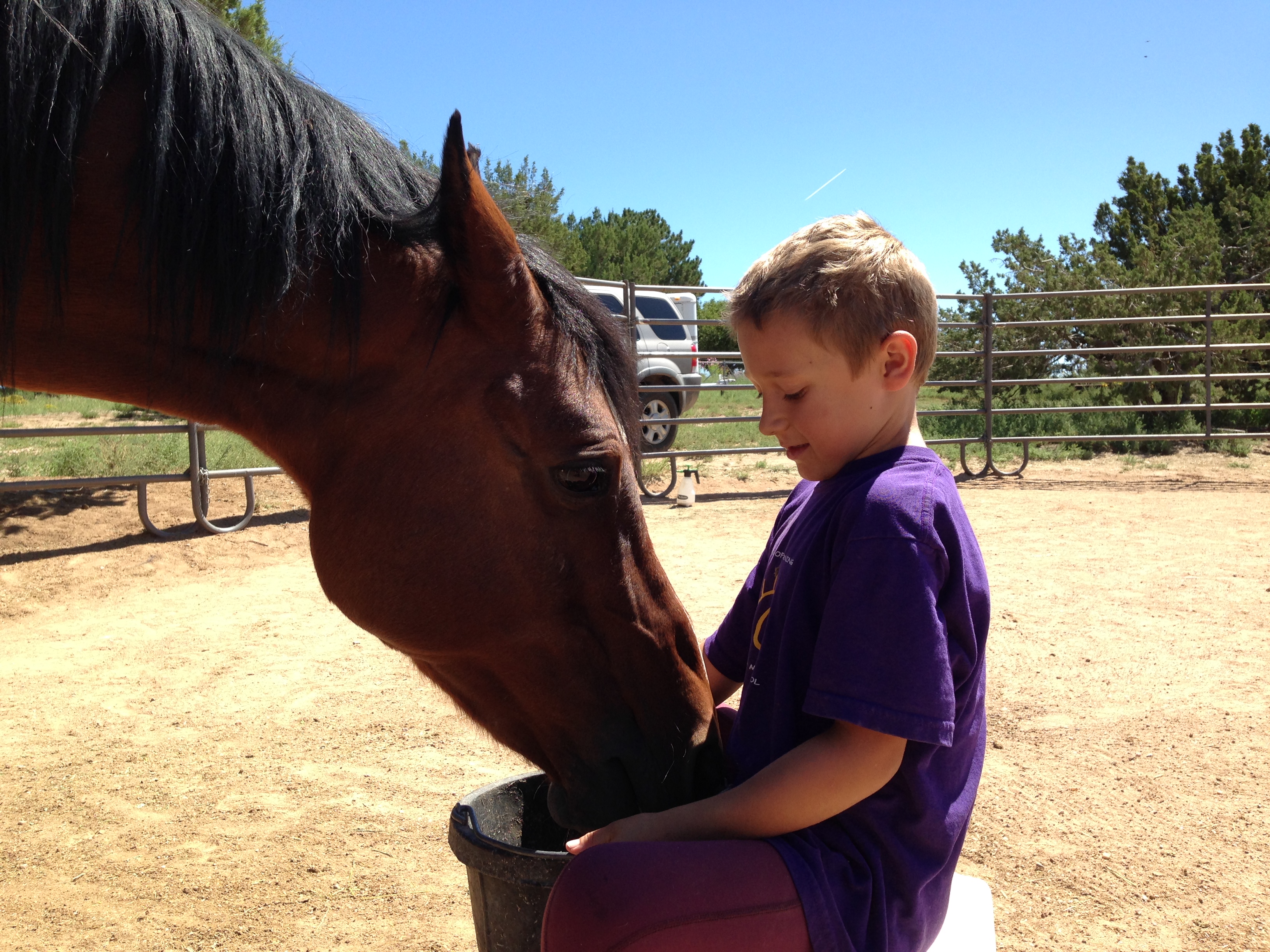 The dance between horses often includes rearing, bucking, kicking out, and biting each other’s necks, particularly among males. If we encourage the dance before the horse is properly socialized and can grasp our role in the herd, then we risk being seen in this way and initiating these responses. We will never be horses and horses know that too, so we need to protect our frailty in the presence of such large beings.
The dance between horses often includes rearing, bucking, kicking out, and biting each other’s necks, particularly among males. If we encourage the dance before the horse is properly socialized and can grasp our role in the herd, then we risk being seen in this way and initiating these responses. We will never be horses and horses know that too, so we need to protect our frailty in the presence of such large beings.
In exchange for us learning the horses’ language, the horse will turn around after some time and offer gifts of attention and activities they think we would enjoy. They will seek something from us, sometimes something that they find interesting about us: our deductive powers, protection, shelter, who knows. Even before this happens in the relationship, I usually get to a point where I can trust the dance. Or I wait for the horse to suggest it.
With horses who automatically respect human boundaries, I can work with the dance much sooner without fearing the risk of flying hooves. We have a lot of fun with sending and prancing together. With a formerly damaged horse I’m very careful. Who knows what buried trauma may emerge when invited to dance? Is he being chased, is that what it translates to? Is she making fun of me? Everything has to be very clear before the beginning of this horse’s dance. And also the dance is tender, not to be engaged in each day like a drill, but instead a dynamic, spontaneous offering, while out in the pasture or in a safe arena. After untacking. After walking together through fields.
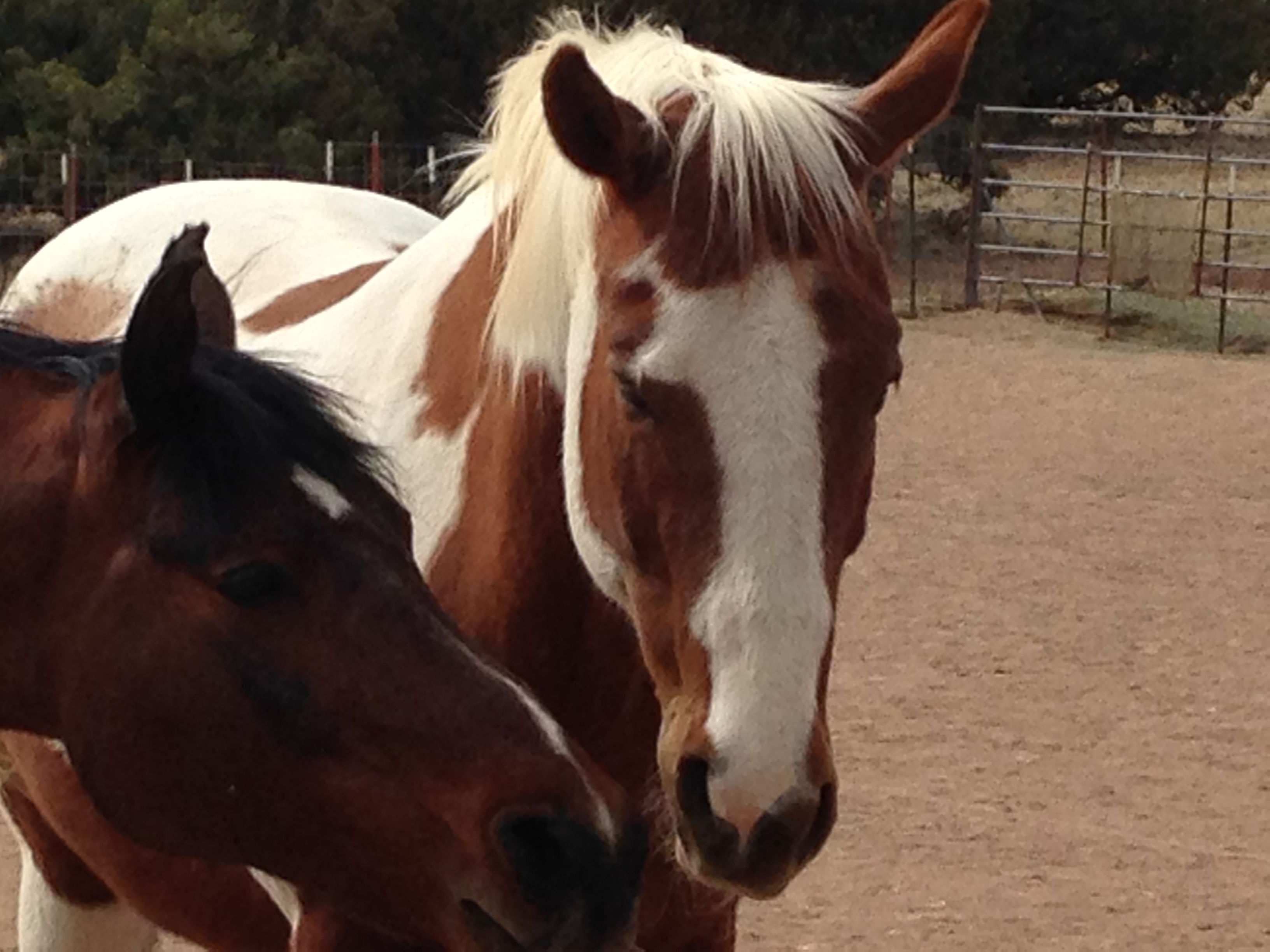 When I go in the pasture with my horses, they find something to startle at and run together. They
When I go in the pasture with my horses, they find something to startle at and run together. They graze and keep an eye on my whereabouts.
graze and keep an eye on my whereabouts.
Their signaling system includes me. To them I may be like the roving herd member, a scout, going off to see where the next watering hole is, the next green grass. I may be flying on a plane, writing a check for hay, arranging for a new barn purchase, they don’t know exactly, but when I return, they include me again. I actually think they feel my presence as I feel theirs, even when we are not physically together.
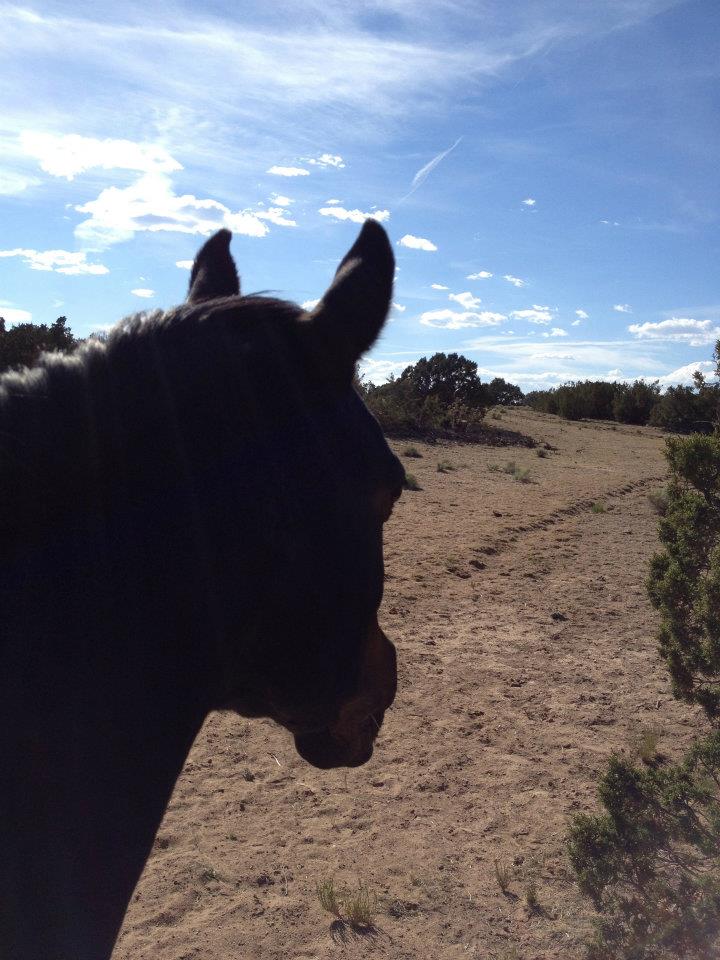 As a roving herd member, I can come and join them and dance with them when I want to. I keep my distance because they’re all running with me together, so they know I can’t run as fast, When the wind gets under their tails, they leave me far behind. Their joy is infectious; if one runs, they all run to feel what the first one feels, to merge together as one: flying feet, manes, tails, nostrils flared.
As a roving herd member, I can come and join them and dance with them when I want to. I keep my distance because they’re all running with me together, so they know I can’t run as fast, When the wind gets under their tails, they leave me far behind. Their joy is infectious; if one runs, they all run to feel what the first one feels, to merge together as one: flying feet, manes, tails, nostrils flared.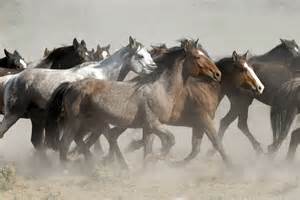
(copyright: Susan Smith, OrthoHorse)
*****
Keep an eye on the calendar as more events will be added as they are planned.
Services: Bodywork: (Ortho-Bionomy for people, Equine Ortho-Bionomy, Equine Positional Release (EPR)): private sessions, tutorials, phone consultations, Horse & Rider sessions, distance healing communication and gift certificates
Liberty Coaching: clinics, mini-clinics, workshops, private and semi-private sessions, tutorials, consultations: by appointment: 505.501.2478 or emailing susansmith@orthohorse.info Scheduling now. Contact me for details.
I’m now putting together the 2015 Clinic Calendar. Let me know if you want to do a clinic in your area. Prices will vary according to location.
April 10-12 – Spring Liberty Weekend in Oklahoma — Susan Smith and Ruella Yates, co-instructors. Contact either of us: susansmith@orthohorse.info or ruella@libertyfoundations for further details.
 Photo credit: Catherine Sobredo Photography
Photo credit: Catherine Sobredo PhotographyApril 25 – HOLD YOUR HORSES! AN INTRODUCTION TO EQUINE POSITIONAL RELEASE
Time: SATURDAY 9AM – 4PM $130 Early Bird paid before April 10 – $140 after April 10. Payments are non-refundable after April 10.Learn how to do some effective bodywork in this introductory course.Equine Positional Release, (EPR), is a non-force modality devised by founder Zarna Carter, from her training in Ortho-Bionomy and Homeopathy.
EPR works with the body’s ability to self-correct. By giving the body specific choices, it finds available corrections.EPR can effectively address acute and chronic injury patterns, structure, tendons & ligaments, illness, organ imbalance, fluids, lymph, neurological imbalances, lameness, and much more.
Susan Smith is a registered advanced Ortho-Bionomy practitioner, Equine Ortho-Bionomy and EPR practitioner & Teacher Trainee with a
practice for both people and equines.
To enroll, please contact Susan at 505-501-2478 (cell) or 505-983-2128 (home) Email susansmith@orthohorse.info.
A PayPal option will be put on www.orthohorse.info
Space is limited; please contact Susan for an enrollment form and to arrange payment.

Who will benefit from this work?
All horses and humans, but specifically:
- Horses who have not responded to traditional natural horsesmanship
- Horses who have been frightened, abused and in other ways traumatized
- Horses who may be aggressive or too passive in their herd situations
- Horses who have problems with humans
- All humans who may be puzzled about relationship with horses and want to deepen their connection.
December 7-11 Sahaja 2015 5-Day Clinic on the island of St. Vincent in the Caribbean – Susan Smith & Stina Herberg. See details:
Independent Liberty Trainers Network
Susan & Stina Team Up to Make the Sahaja Clinic an Unforgettable Experience
Susan is a member of the Independent Liberty Trainers Network. libertytrainersnetwork.com/



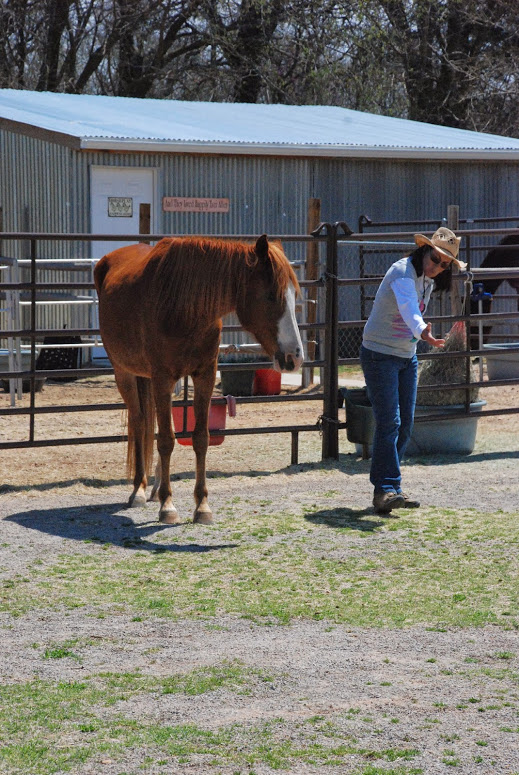
I love this post, and I love The Dance! Your emphasis on safety echos our teaching of this joyful activity, which is an outgrowth of our Liberty Foundations! It most often happens unbidden, and is sheer delight!
For the Free Horse,
Ruella Yates
Thanks, Ruella!